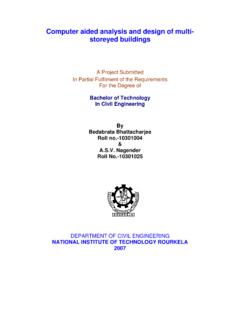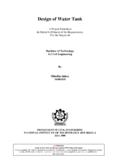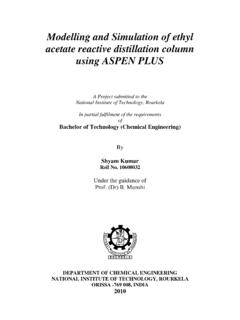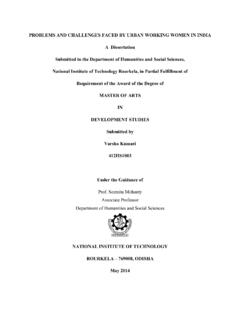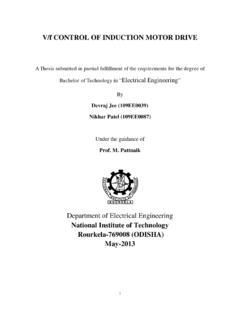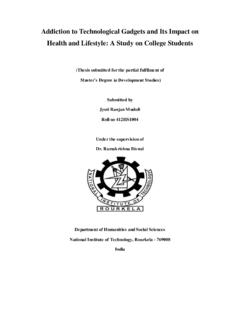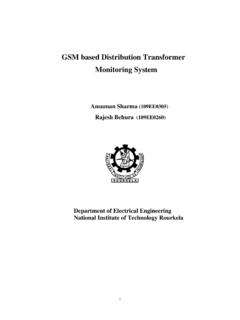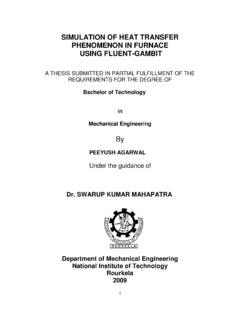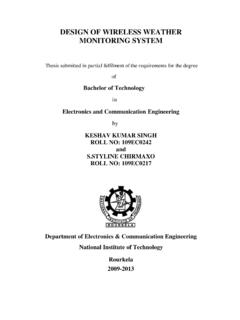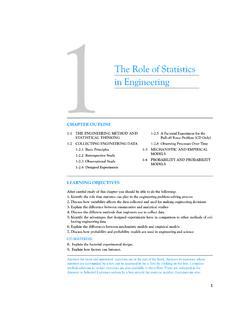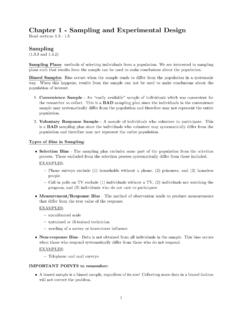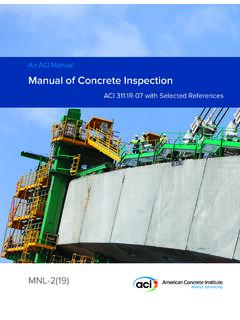Transcription of CHANGING PATTERNS OF TRIBAL LIVELIHOODS: A CASE …
1 CHANGING PATTERNS OF TRIBAL livelihoods : A CASE STUDY IN SUNDARGARH DISTRICT, ODISHA A Thesis Submitted for the Partial Fulfillment of Master Degree in Development Studies by Vijay Oraon Roll No 410HS1001 Guided by Dr. Nihar Ranjan Mishra Department of Humanities and Social Sciences National Institute of Technology Rourkela India 769008 2012 2 Declaration I, hereby declare that I have completed my project work on CHANGING Pattern of TRIBAL livelihoods : A Case Study in Sundargarh District, Odisha at National Institute of Technology, Rourkela, Odisha in the Academic Year 2011-12. The information submitted here by me is true and original to the best of my knowledge. Vijay Oraon in Development Studies Dept: Humanities and Social Sciences National Institute of Technology, Rourkela, Odisha 3 Ranjan Mishra Assistant Professor Department of Humanities and Social Sciences National Institute of Technology Rourkela-769008 Certificate This is to certify that the dissertation entitled, CHANGING pattern of TRIBAL livelihood: A case study in Sundergarh district, Odisha submitted by Mr.
2 Vijay Oraon partial fulfillment of the requirements for the degree of Master of Arts in Development Studies at the Department of Humanities and Social Sciences, National Institute of Technology, Rourkela, is an authentic work carried out by him under my supervision. To the best of my knowledge, the matter embodied in the dissertation has not been submitted to any other University / Institute for the award of any Degree or Diploma. (Dr. Nihar Ranjan Mishra) 4 Acknowledgement Here I would like to convey my gratitude to my guide Dr. Nihar Ranjan Mishra, Assistant Professor, Department of Humanities and Social Sciences, National Institute of Technology, Rourkela for his guidance. I am grateful to him for devoting time for thought provoking and stimulating discussions in spite of his busy schedule.
3 The other faculty members are helping me in knowing the actual problem of area as well as the village. I am also thankful all my classmates for their help during field work. I am also great full to all the villagers who helped me collecting the data without whose support my work cannot be completed. Vijay Oraon 5 Acronyms NGOs Non Government Organization MGNREGS Mahatma Gandhi National Rural Employment Guarantee Scheme RSP Rourkela Steel Plant NIT National Institute of Technology CPRs Common Property Resources Ha Hector IAY Indra Gandhi Awas Yojana PDS Public Distribution System NAL Non Agriculture Labor HYV High Yielding Varity 6 Contents Page no Acknowledgement 4 Acronyms 5 chapter 1 8-20 Introduction and Literature Review Objective of the study Methodology Study area sampling procedure Source of data collection Primary data collection Secondary data collection Signification of the study Limitation of
4 Study Chapterization chapter 2 21-29 Finding and analysis Source of livelihood chapter 3 30-31 Conclusion References 32-33 7 Abstract Agriculture and allied activities that support the livelihoods of nearly 70 percent of India s rural population, has lost its importance. In recent years, land based livelihoods of small and marginal farmers are increasingly becoming unsustainable. As their land has failed to support their family s food requirements they are forced to look at alternative means for supplementing their livelihoods . The rapid changes at the macro level that India witnessed since the early nineties has contributed to the instability of the livelihood systems of the poorer section of both rural and TRIBAL households.
5 The emergence of industry and market economy has disturbed the age old TRIBAL and nature relation. Taking the anthropological methodology into account the present study tried to explore the traditional pattern of livelihoods and their CHANGING scenario in a TRIBAL dominated village of Sundargarh district, Odisha. If we look into the CHANGING contest of livelihood of the study village it will be found that it has changed a lot in course of time. During the British period the villagers were mostly depending on forest resources for their livelihoods . They used to collect various forest based products and fuel woods from nearby forest. The villagers were managing the forest. Apart from forest resources they used to do some cultivation in forest land.
6 Mostly it was a system of mono cropping. Their economy was subsistence in nature. They were struggling to feed them. In course of time slowly this forest got degraded because of lots of reasons. The rise of industrialization, intervention of outsiders and rise of population became major threat for these communities. The degraded resources failed to suffice the needs of the villagers. It compelled the TRIBAL inhabitants to look for other alternatives. In the initial days it was only agriculture, which gave them an alternative source of livelihoods . But the small land holding size and traditional technology failed to meet the rising needs of villagers. Due to increase the population and requirement of industrial needs the forest depletion rate is very fast in study area.
7 Peoples are now travelling long distance to collect the firewood. They have engaged themselves in various small industries in their locality. Most of the young children in the study area have engaged themselves in non-agriculture sector. Keyword: Livelihood; TRIBAL ; industry 8 chapter I Introduction and Literature Review The life style and tradition of each indigenous community is unique and is related to the utilization of particular natural resource and particular type of work. They had been collecting resources from forest without causing any damage to it. The forest provides them with food and livelihood security. Since TRIBAL communities live in close proximity with biodiversity rich landscapes, they have evolved local specific and novel livelihood strategies based on their indigenous knowledge.
8 This knowledge was passed on through generations and it played an important role in the conservation and sustainable use of biodiversity. By and large, they were depending on nature for their survival. Thus, there always existed an organic unity between humans and their surrounding environments in the traditional societies. As a result, there existed an intricate relationship between their culture and nature. Social and cultural diversity, coupled with the environmental complexity, have generated diverse approaches and technologies in the management and use of different natural resources (Mishra, 2007). It is pertinent to note that, traditionally villagers, specifically the TRIBAL , managed their affairs and resources on a sustainable basis (Roy Burman, 1993).
9 Their village councils ensured strict observance of institutionalized rules and cultural practices for the sustainable use and management of natural resources. They also regulated the use of natural resources more prudently. Studies have shown that most of the TRIBAL communities are well aware of the value of conserving biological resources, and had devised effective methods to conserve them (Gadgil and Berkes, cited from Singh et al., 1996). Indigenous peoples knowledge, conservation beliefs and values, environmentally adaptive and sensitive land use, resource management practices, and determined defense of territory and natural resources have enabled many of them to inhabit in the natural habitats for centuries without destroying their ecosystems and biodiversity ( Sterens, 1997).
10 Since the ages TRIBAL communities live in the lap of the nature. Their economy and culture are closely associated with nature and the nature is like the womb of the mother. The life style and tradition of each indigenous community is unique and is related to the utilization of particular 9 natural resource and particular type of work. The interaction between human being and nature has always been reciprocal. This evident in TRIBAL communities where there always exist a symbiotic relationship between their livelihood pursuits and the surrounding natural resource base like the forest, land, water bodies, mineral resource and other flora and fauna. For TRIBAL people land is important source of livelihoods . Around 90% of tribe s populations in India were depending on land directly or indirectly for their survival (Verma 1995).
